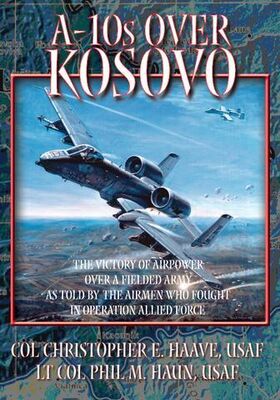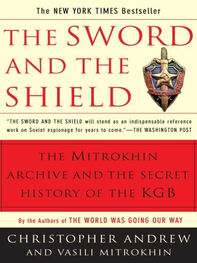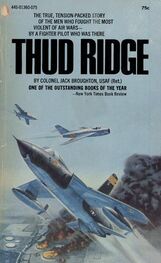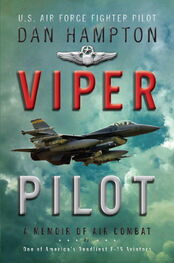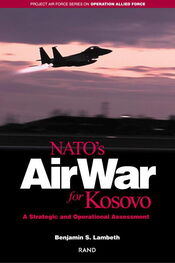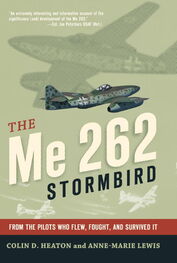Before March and except for us, few people thought about using A-10s to attack ground targets. During the weeks between the end of our planned 30-day Operation Deliberate Force rotation and the start of OAF on 24 March, we had quietly increased the number of our A-10s deployed to Aviano from six to 15. Part of the buildup was consciously approved through all channels. We had convinced the CAOC that CSAR alert for both northern and southern Serbia would require a minimum of eight combat-ready A-10s with at least two spares. Some of the other forward-deployed Hogs were the consequence of the 31st AEW’s approving our requests to park more jets in its allotted area and the dynamics of moving crews and aircraft in and out of Aviano. For example, after six weeks at Aviano, I had returned to Spangdahlem on 7 March and left Lt Col Mark “Coke” Koechle, the 81st operations officer, in charge of our detachment of 12 A-10s. Two weeks later we received the warning order to be ready to go on 24 March. I returned with a two-ship of A-10s to Aviano, increasing our force to 14. A couple of days later, another Hog pilot transported some critically needed parts to Aviano, and, voilà, we had 15 A-10s—our force structure at the beginning of OAF.
How would these Hogs be used? Our recent Bosnia experience (1994 and 1995) convinced us that our bosses would ask for A-10 expertise when we began to engage fielded forces. Maj Goldie Haun, our squadron’s weapons and tactics officer, had already given this question much thought and had prepared a concept on how to conduct AFAC-led NATO force packages against fielded forces. On 12 March Colonel Johnson and Colonel Carpenter (CAOC division chiefs for operations [C3] and plans [C5]) came to Aviano to discuss employment concepts with Col Jeffrey Eberhart (our 31st EOG commander). Coke and Goldie were invited to their meeting, and Goldie quickly briefed them on his AFAC concept. During the next two days, FS weapons officers and leadership representatives (rep) from the 81st (A-10s), 510th and 555th (F-16CGs), 23d (F-16CJ), and 492d and 494th (F-15Es) hashed out the plan’s details. The result was Goldie’s plan, which had A-10s leading the day missions and F-16CGs leading the night missions.
The plan was briefed to Brig Gen Dan Leaf, commander of the 31st AEW, on the morning of 15 March by Colonel Eberhart and Maj “Bro” Broderick (31st AEW’s weapons chief). General Leaf gave it a “thumbs up.” Presumably, since the current campaign plan called for night operations only, there was no discussion of A-10 AFACs. They were mentioned solely in the context of CSAR. After Bro’s briefing, Goldie lobbied hard to include A-10 daytime AFAC missions in Colonel Eberhart’s briefing to Lt Gen Mike Short. General Short, as the dual-hatted commander of USAFE’s Sixteenth Air Force and NATO’s AIRSOUTH, was briefed that afternoon and approved the plan to use F-16s as the primary night AFACs and A-10s as the primary day AFACs. The concept was titled the Combined Air Interdiction of Fielded Forces (CAIFF).
Lt Col Gregory A. “Snoopy” Schulze, my predecessor as the commander of the 81st FS, was then stationed at Ramstein AB, Germany, as the chief of USAFE’s flying standardization and evaluation. He had been tasked to take the briefing General Short had approved and make it ready for presentation to Gen John P. Jumper, the USAFE commander, and Gen Wesley K. Clark, who was dual-hatted as supreme allied commander Europe (SACEUR) and combatant commander, United States European Command. During his preparation Snoopy called me at Aviano to get additional details on two unique A-10 target-acquisition capabilities—our binoculars and Pave Penny. Our hand-carried, gyrostabilized 12- and 15-power binos provided a sharper, more color-contrastive, and larger image than the low-altitude navigation and targeting infrared for night (LANTIRN) targeting pod. With the aircraft-mounted Pave Penny laser-spot tracker, we could confirm that another aircraft’s targeting laser was designating the right target before we allowed the pilot to release weapons.
Snoopy called later to say that the CAIFF concept was approved. It was great to get SACEUR to buy the concept, but it was another challenge to translate that concept into a coherent tactical plan that would work in flight. Some expressed concern that circling A-10s over known threats—radar-guided missiles, radar-directed antiaircraft artillery (AAA) sites, and an abundance of man-portable missiles—would be asking to get shot down. Those folks thought the best way to attack Serb armor would be to assemble a strike package just to the south of Kosovo. When alerted by JSTARS of the exact location of a convoy on the move, the attack package could push forward and attack. Still other aviators thought A-10s would be particularly vulnerable due to their large size, slow speed, and radar cross section. Jim Bitterman, for example, was an exasperating nonaviator “expert” and Cable News Network (CNN) correspondent who habitually reported from the end of Aviano’s runway. He generally provided an informative, accurate, and useful commentary. However, as he observed A-10s taking off, he would invariably intone “the low, slow, vulnerable A-10” and muse that we really had no reason to fly in this campaign. Of course, the media did not yet know that Hogs had successfully led the rescue of the F-117 pilot and that they were getting ready to lead the very first attacks on fielded Serb forces.
We ignored those affronts and continued to work on our plan. We knew that no professional army would drive around in convoys, waiting to be picked off like ducks at a carnival—at least, not more than once. We also knew that even tanks would be very hard to find once the Serb ground forces hunkered down in the hilly, forested terrain spotted with villages. Most of all, we were convinced that any Serb foolish enough to open fire on a flight of Hogs would make himself an easy target and a big loser in any weapons exchange.
The CAOC order, which gave us three days to prepare, stated that day-only CAIFF operations would commence 30 March and would be led by A-10s. We speculated that this decision, more than anything else, reflected the need for positive target identification—a task for which the A-10 and its pilots were well suited. Leading these large force packages would pose a new challenge for the Panthers. Although our weapons officers had led large force packages as part of their USAF Weapons School graduation exercise, no one had ever put a mission like this together—with these kinds of targets and so many NATO participants. By contrast, the F-16CG mission commanders who so ably led the first interdiction strikes on 24 March had been practicing AI packages in Bosnia for weeks, and had even done a couple of “dress rehearsals” for the day-one strikes. We would get no such practice—or so we thought.
Coke, Goldie, Buster, and I, with a lot of help, worked intensely during those few days. We coordinated with reps of all the plan’s players: NAEW, ABCCC, JSTARS, tanker, SEAD, jammer, air defender, and striker aircraft. We then put the final touches on our command and control procedures, frequencies, airspace deconfliction, attack coordination, and tactics—basically, all the details a good plan requires. The CAOC directed the force to operate over Kosovo for three hours, an operational constraint which reflected the limited availability of F-16CJ SEAD, EA-6B jammer, and tanker aircraft. The CAIFF mission did not have top priority, so to save on tankers, we used Lakenheath F-15Es. They were there primarily to fly in the air defense orbit that day and would then come down and be our first strikers if we found something. This was a win-win situation, since each of the highly respected Strike Eagles carried six 500 lb laser-guided bombs (LGB) under each wing! For airspace and target-area deconfliction, we split Kosovo into two sectors, with aircraft entering and exiting via Albania into the western half and via Macedonia for the eastern half. We planned to launch a total of eight A-10s. Two two-ship flights would cover the first 45 minutes in each of two sectors, with the other two two-ships swapping in as the first four went to the tanker. We planned to repeat this rotation to cover our 3-hour “vulnerability,” or “vul,” period. I would be the mission commander on the first day, with Goldie as my deputy leading the second four-ship. On the second day Buster would lead, with me as his deputy. Coke would fly on day one in my foursome as the element lead in the opposite sector. My wingman would be Maj Wade “Biggles” Thompson.
Читать дальше